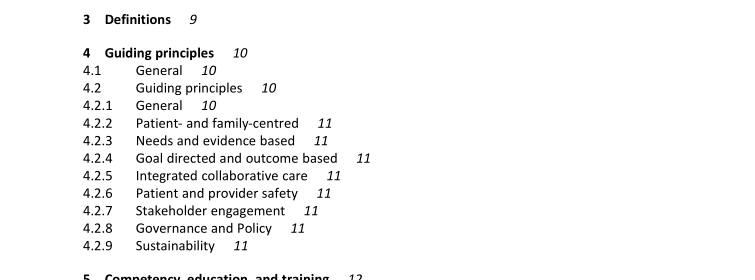CAN CSA Z1630-17 pdf download – Community paramedicine: Framework for program development.
The health care system is facing unprecedented challenges. There is increased financial pressure in the health care system, a shortage and misdistribution of health care professionals in some regions, and increased demand on paramedic services. At the same time, many jurisdictions are increasingly committed to transforming the health care system to be more patient and community-based. Community paramedicine programs have emerged throughout Canada and internationally in an effort to maximize efficiencies in patient care and resources. These programs provide an innovative model of care that helps to improve access to additional support services for seniors and patients with chronic health and social issues. The development and expansion of these programs allows paramedics to apply their education and skills beyond the traditional role of emergency medical responders. These programs help to support high users of paramedic services to avoid emergency room visits and hospitalizations and can potentially delay entry to long-term care. The aim of these programs is to improve patient outcomes and decrease costs in a way that supplements, but does not replace, services delivered by other health care providers. These programs can help to provide a more sustainable, integrated, patient-centred system. While many paramedic services and jurisdictions are developing and expanding these programs there are no nationally or internationally accepted guidelines for the development of community paramedicine programs. This Standard addresses the elements that experience has shown to be the most critical in developing an effective community paramedicine program.
1.4 This Standard does not provide detailed scope of practice or protocols for the full range of services provided by programs. It is recognized that the regulation of services and personnel cross a number of regulatory authorities including federal, provincial/territorial, regional, and local boundaries. All services and personnel should ensure that they meet the requirements of the various regulatory bodies and authorities having jurisdiction. 1.5 In this Standard, “shall” is used to express a requirement, i.e., a provision that the user is obliged to satisfy in order to comply with the standard; “should” is used to express a recommendation or that which is advised but not required; and “may” is used to express an option or that which is permissible within the limits of the Standard. Notes accompanying clauses do not include requirements or alternative requirements; the purpose of a note accompanying a clause is to separate from the text explanatory or informative material. Notes to tables and figures are considered part of the table or figure and may be written as requirements. Annexes are designated normative (mandatory) or informative (non-mandatory) to define their application. 2 Reference publications This Standard refers to the following publications, and where such reference is made, it shall be to the edition listed below: IHI (Institute for Healthcare Improvement) IHI Triple Aim Initiative http://www.ihi.org/Engage/Initiatives/TripleAim/Pages/default.aspx Paramedic Association of Canada 2016 Canadian Paramedic Profile
Community health needs assessment — a systematic method for reviewing the health issues facing a population, leading to agreed priorities and resource allocation that will improve health and reduce inequities. Community paramedicine program — a program that uses paramedics to provide immediate or scheduled primary, urgent, and/or specialized healthcare to vulnerable patient populations by focusing on improving equity in healthcare access across the continuum of care. Community paramedic — a paramedic who has completed a formal and recognized educational program and has demonstrated competence in the provision of health education, clinical assessment and monitoring, point of care diagnostics, and treatment modalities within or beyond the role of traditional emergency care and transport. Community resource capacity assessment — the combined influence of a community’s commitment, resources, and skills that can be deployed to build on community strengths and address community problems and opportunities. Differentiated practice — the use of paramedics in a non-emergency setting or acute non-life threatening situations according to their expertise and qualifications. Evidence-based practice — the integration of best research evidence with clinical expertise and patient values to facilitate clinical decision making. Sustainable health and health care — the appropriate balance between the cultural, social, and economic environments designed to meet the health and health care needs of individuals and the population (from health promotion and disease prevention to restoring health and supporting end of life) and that leads to optimal health and health care outcomes without compromising the outcomes and ability of future generations to meet their own health and health care needs.CAN CSA Z1630-17 pdf download.
